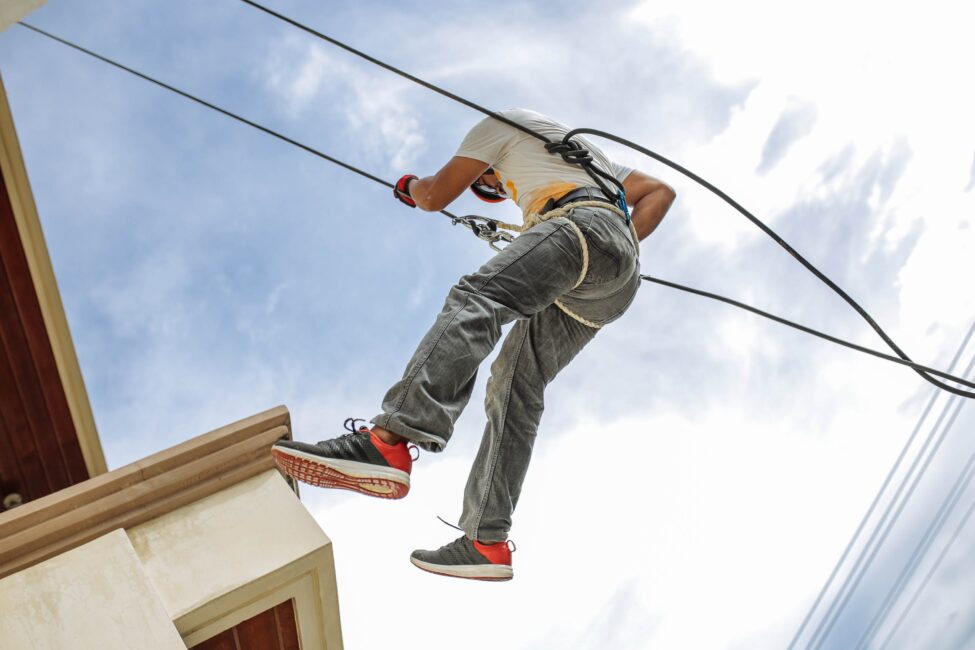Safety is of paramount importance in any workplace, and it is the responsibility of business owners to ensure that their employees are kept safe. To do this, they must be equipped with the right tools and equipment to help minimize risk in their operations. This article will explore some of the most important pieces of safety equipment that can help protect your team on the job. From personal protective gear to automated systems designed to detect hazards quickly and alert staff before an accident occurs, we’ll discuss how each item works and why it’s essential for keeping everyone safe at work. We’ll also look at ways you can ensure proper usage of these items by providing clear instructions for employees as well as ongoing training about safety protocols. By investing in safety-related equipment, employers can not only reduce potential liabilities but create a healthier work environment overall.
Warning Lights and Signs
Visible warning lights and signs are essential for alerting employees of potential hazards in the workplace. These can help reduce the risk of slips, trips and falls, electrocutions, and chemical exposure. In addition to being highly visible, warning lights should also be strategically placed near hazardous areas so that staff can easily spot them from a distance. On the other hand, when discussing warning signs, whether they be in the form of custom data plates, showing caution, warning, or danger warnings, they also need to be positioned in an area where they can easily be seen by employees. For instance, if warning signs are placed near floor drains, they can support a safe working environment by reminding staff not to pour hazardous materials down the drain. For anyone looking to buy quality warning signs, click here to visit our website for customizable and highly visible warning signs that are designed to enhance safety and prevent accidents in various settings.
Personal Protective Gear (PPE)
Despite the fact that warning signs and lights can alert workers of potential hazards, some tasks may still require a higher level of protection. To help protect employees from dangerous conditions or substances, Personal Protective Equipment (PPE) is essential. Common types of PPE include safety glasses, face shields, hard hats, boots with steel toes, and puncture-resistant gloves. Depending on the job, additional safety items may be necessary as well. For instance, if a work area is prone to fires or explosions, employees should wear flame-resistant clothing and have access to fire extinguishers. Proper use of PPE can help prevent serious injury or death in the event of an accident.
Safety Harnesses and Lanyards
If your team works in situations where the risk of falls is high, it’s important to provide safety equipment that will minimize injury. Safety harnesses and lanyards are essential pieces of equipment for workers who operate at height. A safety harness supports the employee by distributing their weight across the body evenly while a lanyard anchors them to an overhead anchor point. It’s important to ensure that safety equipment is professionally tested for defects and that it meets industry standards such as those set by the American National Standards Institute (ANSI).
Automated Fire and Smoke Detection Systems
Automated fire and smoke detection systems can help protect your team by detecting fires before they become too large. These systems can be integrated with sprinkler systems, enabling them to take action quickly when a fire is detected. Smoke detectors also have the ability to alert staff of smoke or elevated carbon monoxide levels in time for them to evacuate the premises safely. Regular testing and maintenance of these systems are essential for ensuring they remain in working order. Furthermore, it’s important that staff is trained on how to respond appropriately in the event of a fire emergency.
Emergency Exit Lighting System
In the event of a fire or other emergency, it’s critical that employees know where to exit. Emergency exit lighting systems provide illumination throughout the premises, allowing staff to quickly and safely evacuate the building in an emergency situation. This can be especially beneficial in dark areas such as basements or corridors. Depending on your needs, these lights can run on battery power or be connected to a generator. It’s important to regularly test and inspect these systems, as well as provide adequate training for personnel on how to use them.
First Aid Kits and Training
Finally, it’s important to provide staff with first aid kits and training. First aid kits should be accessible to all personnel at all times and must contain the necessary materials for treating common injuries such as cuts, burns, or fractures. It’s also essential that your team is trained on how to use these items properly in order to ensure safe and effective treatment of an injury. Regular first aid training should also be conducted to ensure staff are aware of the latest developments in medical treatment and can respond appropriately in an emergency situation.Â
By investing in these pieces of equipment, you can help create a safe working environment for your team and ensure that they have the resources necessary to respond quickly and effectively to any potential dangers. With the right safety measures in place, you can help protect your team and give them the peace of mind that their safety is a priority.























